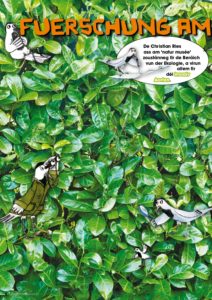
Source: Wikimedia commons
3 female imagoes of Aedes japonicus (Theobald, 1901) were captured on 4th July 2018 in Stolzembourg in the valley of the Our (Oesling). Field exploration on 1st and 2nd August showed the East Asian bush mosquito is also present in Bivels, Vianden, Wahlhausen and Gemünd (D). Further investigations will be undertaken in August to assess the geographical distribution of the species in Luxembourg.
Aedes japonicus is a mosquito species originally native to Japan, Korea and southern China, and is important for humans as a potential vector of pathogens such as the West Nile virus and of various types of encephalitis viruses.
The species is already established in the Province of Namur (Belgium), in North Rhine-Westphalia, Rhineland-Palatinate (Kreis Ahrweiler) and Hesse (Germany), and in Bas-Rhin, Haut-Rhin, Vosges (France).
Advice for the population
Web pages
 Moustiquen: Rotschléi fir d’Bevëlkerung
Moustiquen: Rotschléi fir d’Bevëlkerung Moustiques: conseils pour la population
Moustiques: conseils pour la population Moskitos: Ratschläge für die Bevölkerung
Moskitos: Ratschläge für die Bevölkerung Mosquitos: conselhos para a população
Mosquitos: conselhos para a população
Flyers
Useful links
- Aedes japonicus (Theobald, 1901) on neobiota.lu
- Press release of 1st August 2018 by the Luxembourg Ministry for Health [PDF 40 KB]
Page content last updated on 2019-11-11. Last proofread by Caroline Grounds on 2019-11-11.


